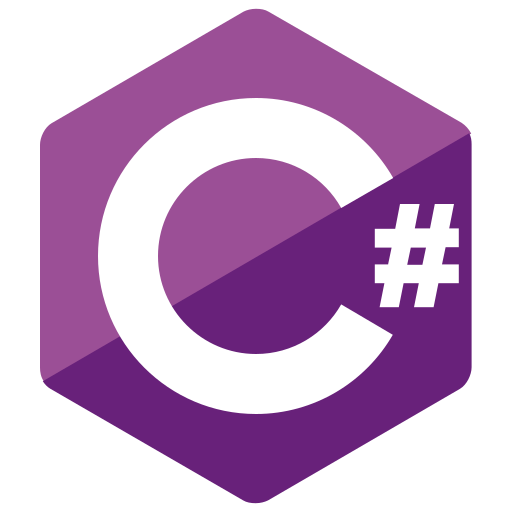In the digital age, email communication is the lifeblood of our personal and professional interactions. From sending important work updates to connecting with friends and family, email plays a pivotal role. However, ensuring that the email addresses we work with are valid and correctly formatted is essential to prevent errors and maintain data integrity. This is where C# email validation comes into play. In this comprehensive guide, we will explore the ins and outs of email validation in C#, from the basics to advanced techniques. Whether you are a seasoned developer or just getting started, this guide will equip you with the knowledge and skills to validate email addresses in C# with confidence.
Understanding the Importance of Email Validation
Before diving into the world of C# email validation, let's discuss why it's so crucial. Invalid or incorrectly formatted email addresses can lead to a cascade of issues, such as failed communication attempts, compromised data quality, and even security vulnerabilities. When you validate email addresses, you ensure that the data your application receives is accurate and reliable.
Basic Email Validation in C#
The foundation of email validation in C# lies in regular expressions. Regular expressions, often abbreviated as regex, are powerful tools for pattern matching and validation. To perform basic email validation, you can use a regex pattern to check if the email address adheres to a standard format. Here's a simple example:
using System;
using System.Text.RegularExpressions;
public class EmailValidator
{
public bool IsValidEmail(string email)
{
string pattern = @"^[a-zA-Z0-9._%+-]+@[a-zA-Z0-9.-]+\.[a-zA-Z]{2,}$";
return Regex.IsMatch(email, pattern);
}
}
This code defines an EmailValidator class with a method IsValidEmail that checks if the provided email address matches the regex pattern. While this basic validation approach works for most cases, it doesn't guarantee that the email address actually exists or is currently in use.
Advanced Email Validation Techniques
To elevate your C# email validation game, consider implementing advanced techniques:
MX Record Lookup: To verify if an email domain exists and can receive emails, perform an MX (Mail Exchange) record lookup using libraries like System.Net.Dns. This step adds an extra layer of validation by checking the domain's DNS records.
SMTP Validation: Send a test email to the address and check if it bounces back. While this method is more resource-intensive, it provides the highest level of assurance that the email address is valid and in use.
Disposable Email Address Check: Prevent users from using disposable or temporary email addresses for registration by maintaining a list of known disposable email domains and checking against it.
Top-Level Domain Validation: Verify that the email address uses a valid top-level domain (TLD) by cross-referencing it with a list of official TLDs. This helps filter out fake or typo-ridden email addresses.
Syntax Validation: Use specialized libraries like MimeKit or FluentEmail to perform detailed syntax validation, ensuring that the email address conforms to the SMTP standard.
Common Pitfalls and Challenges
Email validation can be deceptively complex due to the ever-evolving landscape of email standards and the creative ways people craft email addresses. Here are some common pitfalls to watch out for:
Overly Strict Validation: While thorough validation is essential, being overly strict can lead to false negatives. Avoid rejecting valid email addresses simply because they don't conform to every edge case.
Incomplete Regex Patterns: Incomplete or outdated regex patterns can result in incomplete validation. Regularly update your regex patterns to account for new email address formats.
Ignoring Internationalization: Email addresses can contain international characters. Ensure your validation supports Unicode characters to accommodate a global user base.
Rate Limiting: If implementing SMTP validation, be mindful of rate limiting imposed by email servers. Excessive validation requests can get your IP address blacklisted.
User Experience: Always provide clear and helpful error messages to users when their input fails validation. This enhances the user experience and prevents frustration.
FAQs on C# Email Validation
Q1: Can I use regex alone for foolproof email validation?
While regex can handle most cases, it's not foolproof. Combining regex with MX record lookup or SMTP validation provides a more reliable approach.
Q2: How do I handle international email addresses in C#?
Support international characters by using Unicode-aware regex patterns and libraries like MimeKit that handle internationalization.
Q3: Are there any libraries that simplify email validation in C#?
Yes, libraries like FluentValidation, FluentEmail, and MimeKit provide powerful email validation capabilities, making your job easier.
Q4: Is SMTP validation always necessary?
SMTP validation is the most reliable method but can be resource-intensive. Consider using it selectively for critical processes like user registration.
Q5: How can I prevent abuse of my email validation service?
Implement rate limiting and consider using CAPTCHAs to prevent abuse by automated scripts.
In conclusion, mastering email validation in C# is essential for maintaining data quality and ensuring effective communication in your applications. From basic regex validation to advanced techniques like MX record lookup and SMTP validation, you now have the tools to implement robust email validation in your projects. Remember to stay up-to-date with email standards and continuously improve your validation methods to keep pace with the ever-evolving digital landscape. With these skills, you can build applications that handle email addresses with confidence and precision.



